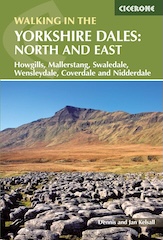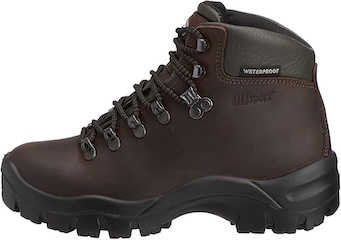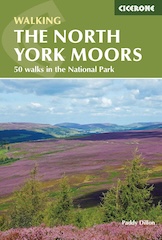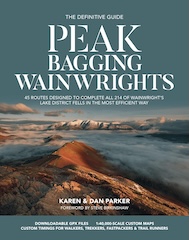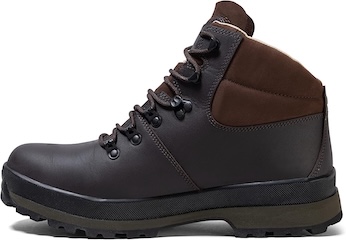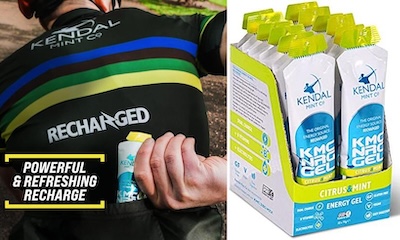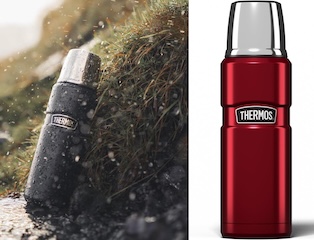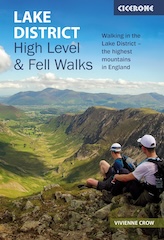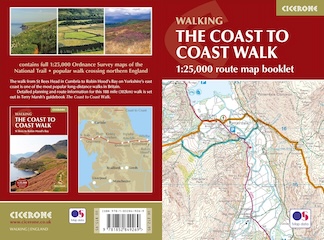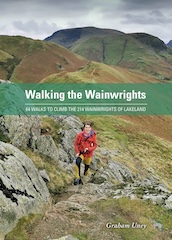Follow the Best Route to High and Low Bride Stones on the Bridestones Walk
Begin your Bridestones walk at the Saltergate car park, a spacious parking area located alongside the A169 Whitby to Pickering road. From the car park, do not cross the road. Instead, turn right and walk north for a short distance along the roadside verge. Although the road is busy, the grassy verge provides a safe walking space. After about a minute, turn right onto a tarmac lane, which is a bridleway signposted to Crosscliff.
Follow this lane through a set of gates, continuing straight ahead. This route is part of the Tabular Hills Walk and is known as the Old Wife’s Way. Heading south-east, you will pass a large hangar-style building on your right. After approximately one mile from the main road, the lane transitions to a concrete surface and bends left, descending downhill. At this point, turn right onto a bridleway marked by a sign for National Trust Bridestones & Crosscliff. Pass through the gate and follow the path south-east onto Newgate Moor, keeping to the top of Newgate Brow on a grassy track. The route runs beside Newgate Wood, but take care to ignore the first public footpath on the right, which leads across the fields. Instead, continue along the track, keeping Newgate Wood on your left.
Around 1½ miles from the main road, you will come to two gates in close succession. Go through the first gate on your right, following a narrower grassy path onto National Trust land, which will lead you into the Bridestones Nature Reserve. Do not continue through the second gate, as this would take you along the Tabular Hills Walk, which is not your intended route. Once inside the nature reserve, the narrow path soon widens into a more defined track across the open moorland. To your left, you will notice a raised ridge, part of an ancient earthwork, with woodland also on your left.

Continue along this track, keeping an eye out for a public footpath on your right, which is somewhat concealed. It is marked only by a small wooden post with a public footpath badge attached. Turn onto this path and follow it across the moorland in a south-westerly direction. The path gradually becomes more defined, and as you progress, you will begin to see some of the impressive rock formations at High Bride Stones on your right. Initially, the path climbs uphill before levelling out and splitting into two. Take the right-hand fork, which leads downhill into Bridestone Griff.
As you descend, the path merges with a stone-cobbled route. Continue downhill, entering the woodland at the bottom of the valley. Cross the small stream and begin the ascent on the other side, following the path up towards High Bride Stones, the first major highlight of your Bridestones walk. You will pass two striking rock formations on your right before reaching another directly ahead. If you wish to explore more of these fascinating rock formations, take a right turn before retracing your steps. Otherwise, turn left.
Walk south along the footpath across Needle Point, with Dovedale Griff valley on your right and Bridestone Griff on your left. Across Bridestone Griff, you will glimpse the rock formations at Low Bride Stones, which you will visit later in the walk. Continue along the gradually descending path until it steepens and zigzags downhill through the woodland. At the bottom, go through a gate, cross a footbridge, and enter the valley of Dove Dale.

Follow the grassy path alongside the stream as the valley widens towards its southern end. Cross another footbridge, pass through a gate, and ascend a grassy bank before turning left onto a stony track. Walk east along this track, with woodland to your left and a sloping grassy bank to your right. Continue along the tree line until you reach another gate. Take note of this gate and the left-hand uphill path, as you will return to this point later. For now, continue straight to the Bridestones car park.
Cross the road into Staindale car park, then follow the path through the picnic area towards Staindale Lake. The path leads to a grassy bank resembling a dam on the lake’s western side. Walk up the steps and turn right onto the path. Continue your Bridestones walk by circling the lake before returning to this point. Retrace your steps through the picnic area and back to Bridestones car park.
From the car park, follow the stone path past the National Trust Bridestones sign and back to the gate you passed earlier. This time, do not go through the gate. Instead, turn right uphill, then take the left-hand fork almost immediately. Follow this steep woodland path until you reach another gate. Pass through it to emerge onto open countryside at Low Bride Stones.
Continue along the cobbled stone path, passing all the dramatic rock formations of Low Bride Stones, the second key highlight of your Bridestones walk. After passing the final rock formation, the path splits. The left-hand path descends back into Bridestone Griff, but you should turn right, heading uphill. Almost immediately, take the left-hand fork, leading across the moorland path through the nature reserve. Eventually, you will reach the wider track at the woodland’s edge. Turn left here.
Retrace your steps north-east along the ancient earthwork, crossing Newgate Moor and following the Old Wife’s Way back to the car park at Saltergate, marking the end of your Bridestones walk.
Bridestones Walk: Maps and Tools
Visit either the OS Maps website or the Outdooractive website to view this walking route in greater detail. Both platforms offer a range of features, including the ability to print the route, download it to your device, and export the route as a GPX file. You can also watch a 3D fly-over and share the route on social media. Additionally, this page includes a printable version of the walk in PDF format. Plus there is a supporting video, available for you to watch on YouTube.
Bridestones Walk: Distance, Duration, Statistics
Distance: 8 miles
Distance: 12¾ kilometres
Duration: 3¾ hours
Ascent: 671 feet
Ascent: 205 metres
Type: Circular walk

Walking in the Yorkshire Dales with 43 Circular Routes
AD This Cicerone guidebook includes 43 circular walks exploring valleys, hills, and moors between Kirkby Stephen and Pateley Bridge. With OS maps, local highlights, and routes ranging from 3–11 miles, it is a year-round companion for walkers of all abilities.
Recommended Ordnance Survey Map
The best map to use on this walk is the Ordnance Survey map of the North York Moors Eastern Area, reference OS Explorer OL27, scale 1:25,000. It clearly displays footpaths, rights of way, open access land and vegetation on the ground, making it ideal for walking, running and hiking. The map can be purchased from Amazon in either a standard, paper version or a weatherproof, laminated version, as shown below.
About the Bridestones Nature Reserve
Spanning over 300 acres, Bridestones Nature Reserve is a high, wild, and awe-inspiring landscape. This remarkable area blends open heather moorland, rugged pasture, wooded hillsides, and flower-filled dales, which burst into colour during the summer months.
Because the reserve is a designated Site of Special Scientific Interest (SSSI), careful land management plays a crucial role in protecting its delicate ecosystems. To maintain the balance of the habitat, conservation efforts focus on controlling new tree growth on the open moor. At the same time, grazing cattle help prevent the land from reverting to the woodland it once was.
At the heart of the reserve, Bridestone Griff naturally divides the two groups of striking rock formations. To the west of Bridestone Griff lies High Bride Stones, while to the east, Low Bride Stones stands equally imposing. Just beyond High Bride Stones, Dovedale Griff descends into the grassy valley of Dove Dale, where ancient woodland thrives alongside a gently flowing beck.
The impressive rock formations at High and Low Bride Stones are the last remnants of a Jurassic-era sandstone cap, formed around 150 million years ago. Over time, relentless forces of wind, frost, and rain have gradually worn away the softer layers of sedimentary rock, leaving behind the strange and sculpted shapes seen today.
The name ‘Bridestones’ is believed to come from the Old Norse ‘brink-stones’ or ‘edge stones’, a fitting description for these towering natural monuments.
Bridestones Walk: My Photos
The car park at Saltergate sits right beside the A169 at the top of a steep bank, directly opposite the Hole of Horcum. A traditional rectangular dry stone wall encloses the car park, surrounding a set of neatly arranged paving stones.

Grisport Unisex Adult Peaklander Hiking Boots
AD The Grisport Unisex Adult Peaklander Hiking Boots are crafted in Italy with a durable waxed leather upper, Spotex breathable lining, and a reliable Track-on rubber sole. Waterproof and weighing just 1120g, they offer comfort, resilience, and dependable performance on demanding trails.
On the paving stones, a carved inscription invites exploration:
Ancient remains, a haven for nature,
a land of myth and giants.
Set out and discover the beauty and tranquility of the
HOLE OF HORCUM
and LEVISHAM MOOR.
Walk among a vast, natural amphitheatre
of moorland, grassland, and woodland.
A place forged over thousands of years by water and frost,
a place protected for nature.
Go further and the ground whispers
clues of an ancient human past.
THE LAND IS CALLING,
you only have to look and listen.

Leaving behind the bustle of the main road, I follow a peaceful, easy-going track known as Old Wife’s Way, which also forms part of the Tabular Hills Walk. In the distance, Blakey Topping stands out, its distinctive hill shape a striking feature in the landscape.

Grisport Unisex Adult Peaklander Hiking Boots
AD The Grisport Unisex Adult Peaklander Hiking Boots are crafted in Italy with a durable waxed leather upper, Spotex breathable lining, and a reliable Track-on rubber sole. Waterproof and weighing just 1120g, they offer comfort, resilience, and dependable performance on demanding trails.
After walking for about a mile, I leave the main track and take a bridleway, passing a sign for National Trust Bridestones & Crosscliff. The bridleway carries me across the top of Newgate Brow, a flat and easy-to-walk route with no noticeable inclines. As I continue this section of my Bridestones walk, Blakey Topping remains in view, a familiar companion along the way.

Looking north across Newgate Brow, I spot another prominent hill in the area—Hazelhead Moor.

Fifty Walks Across the Beautiful North York Moors National Park
AD Discover 50 routes across the North York Moors, from short easy strolls to challenging high-level hikes. With OS maps, route descriptions, and local highlights, it also includes the legendary 40-mile Lyke Wake Walk, described in four accessible stages.
Even as I continue across the brow, Blakey Topping remains visible. A legend surrounds this intriguing hill, one I will share later on this page.

The bridleway takes me across Newgate Moor, with the steep slopes of Newgate Brow dropping to my left and a vast expanse of farmland stretching out to my right.

Fifty Walks Across the Beautiful North York Moors National Park
AD Discover 50 routes across the North York Moors, from short easy strolls to challenging high-level hikes. With OS maps, route descriptions, and local highlights, it also includes the legendary 40-mile Lyke Wake Walk, described in four accessible stages.
Here is a crucial turn I must not miss—roughly 1½ miles into the journey. Two gates stand ahead. The track through the second gate on the left follows the Tabular Hills Walk to Crosscliff, but I take the first gate on the right, which leads me into the Bridestones Nature Reserve.

Heading south along the moorland track, I walk through a landscape of heather, with a raised bank on my left. According to the Ordnance Survey map, this ridge marks the site of an ancient earthwork.

Osprey Hikelite Unisex Backpack for Comfortable and Lightweight Hiking
AD The Osprey Hikelite backpack combines lightweight design with practical features, including a breathable mesh back panel, soft webbing straps, and stretch mesh water bottle pockets. With zipped storage and an organiser compartment, it is ideal for day hikes and outdoor use.
Continuing south, I have woodland on my left and open moorland on my right. I stay alert for a public footpath on the right, which I will need to follow.

This path is easily missed. A small wooden post, barely noticeable, marks its entrance, with a public footpath badge attached to it.

Osprey Hikelite Unisex Backpack for Comfortable and Lightweight Hiking
AD The Osprey Hikelite backpack combines lightweight design with practical features, including a breathable mesh back panel, soft webbing straps, and stretch mesh water bottle pockets. With zipped storage and an organiser compartment, it is ideal for day hikes and outdoor use.
The path gently rises and soon becomes more defined as it crosses the countryside of the Bridestones Nature Reserve.

From here, I glance to my right and spot the first of the unusual rock formations at High Bride Stones. My plan for this Bridestones walk is to visit High Bride Stones first before heading to Low Bride Stones later.

Peak Bagging Wainwrights with Routes to Complete All Fells
AD This comprehensive guide offers 45 circular routes linking all 214 Wainwright fells. With maps, GPX downloads, elevation profiles, and practical advice, it provides efficient yet inspiring ways to complete this classic Lake District challenge at your own pace.
Before long, I take a right turn onto a small, eroded path that leads downhill towards High Bride Stones.

The narrow, worn path soon joins a much sturdier cobbled stone path, which continues downhill into woodland in a small valley known as Bridestone Griff.

Peak Bagging Wainwrights with Routes to Complete All Fells
AD This comprehensive guide offers 45 circular routes linking all 214 Wainwright fells. With maps, GPX downloads, elevation profiles, and practical advice, it provides efficient yet inspiring ways to complete this classic Lake District challenge at your own pace.
At the bottom of Bridestone Griff, the cobbled path crosses a small stream before climbing the other side of the valley. The paths here are well maintained, as this area attracts many visitors and tourists.

Emerging from the woodland, I follow the path past the first two large rocky formations at High Bride Stones, standing tall on my right.

Berghaus Hillmaster II GTX Men's High Rise Hiking Boots
AD The Berghaus Hillmaster II GTX men’s hiking boots feature a waterproof, breathable GORE-TEX membrane, a memory foam tongue and collar for a personalised fit, and a Vibram sole delivering exceptional grip, stability, and shock protection for confident performance on any terrain.

The path then leads me to another pair of impressive rock formations, meeting a T-junction where I have the choice to turn left or right. I need to go left, but first, I make a quick detour to the right to explore further. There is much more to see.

Berghaus Hillmaster II GTX Men's High Rise Hiking Boots
AD The Berghaus Hillmaster II GTX men’s hiking boots feature a waterproof, breathable GORE-TEX membrane, a memory foam tongue and collar for a personalised fit, and a Vibram sole delivering exceptional grip, stability, and shock protection for confident performance on any terrain.
The right-hand detour takes me along a charming path where I can wander through a stunning collection of sandstone rock formations. The scale of these rocks is remarkable, and I am able to walk around, between, and even on top of them, where the views are breathtaking.


Kendal Mint Co Energy Gel with Citrus and Mint Flavour
AD Kendal Mint Co energy gels deliver 27g of fast-absorbing carbohydrates plus electrolytes and B vitamins for improved performance. Vegan, gluten free, and Informed Sport certified, these caffeine-free gels are refreshing, easy to digest, and ideal for running, cycling, and endurance.


Kendal Mint Co Energy Gel with Citrus and Mint Flavour
AD Kendal Mint Co energy gels deliver 27g of fast-absorbing carbohydrates plus electrolytes and B vitamins for improved performance. Vegan, gluten free, and Informed Sport certified, these caffeine-free gels are refreshing, easy to digest, and ideal for running, cycling, and endurance.
After exploring, I return to the T-junction and continue along the ridge known as Needle Point.

Some of these rock formations even contain small caves, making this a fun and fascinating area for children to explore.

As I head south along Needle Point, the walk remains beautiful and engaging. Wooden benches line the path, inviting walkers to pause and soak in the tranquil atmosphere. On my right, Dovedale Griff cuts through the landscape, while Bridestone Griff lies to my left.

The path gradually descends, winding through a striking silver birch woodland.

At the bottom of Needle Point, I reach a gate, which I pass through before crossing a footbridge into Dove Dale at its northern end.

Walking through Dove Dale, I follow a scenic path that runs alongside a small stream. This is one of the most picturesque parts of my Bridestones walk.

Lake District High Level and Fell Walks with Thirty Routes
AD This pocket-sized guide presents 30 routes on the Lake District’s highest fells, including Scafell Pike, Helvellyn, and Blencathra. With OS maps, colour photographs, and practical notes, it offers circular walks from 4–15 miles graded by difficulty.
At the southern end of Dove Dale, I cross another footbridge and walk through a gate to continue the journey.

Leaving Dove Dale, I take an eastward path through a tree-lined section. The trees here show clear signs of exposure to the elements—their twisted roots grip the soil, and their trunks display fascinating growth patterns.

Lake District High Level and Fell Walks with Thirty Routes
AD This pocket-sized guide presents 30 routes on the Lake District’s highest fells, including Scafell Pike, Helvellyn, and Blencathra. With OS maps, colour photographs, and practical notes, it offers circular walks from 4–15 miles graded by difficulty.
One tree, in particular, catches my attention. A large branch bends into a dramatic U-shape before curving upwards again, shaped over time by the relentless forces of nature.

The path leads through a picnic area, bringing me to the western edge of Staindale Lake. This beautiful lake is a highlight of my Bridestones walk, and I take the opportunity to follow a path around its entire circumference.

The path along the southern side of Staindale Lake winds through a picturesque woodland trail. Towering evergreen trees flank the route, their dense canopy creating a shaded, enclosed atmosphere. Along the way, several benches provide ideal spots for a well-earned rest. I take a break here for coffee and lunch, marking the halfway point of my Bridestones walk.


At the eastern end of Staindale Lake, a bird feeding station attracts a flurry of activity. Birds such as great tits, blue tits, marsh tits, coal tits, robins, goldfinches, and chaffinches dart in and out, feasting on the scattered food.

This side of the lake also features additional seating areas, perfect for lunch stops and peaceful moments of reflection.

Mountain Warehouse Merino Womens Long Sleeve V Neck Top
AD This Mountain Warehouse Merino top combines warmth, comfort, and practicality. Made with high-quality wool, it is naturally antibacterial, lightweight, and easy to pack. Designed for outdoor activities, it keeps you fresh and warm, and comes with a two-year warranty.
Nearby, a striking sculpture stands beside Staindale Lake, created in collaboration with stained-glass artist Ann Sotheran. The piece, inspired by the dragonflies and demoiselles that inhabit the area, is a combination of stainless steel, stone, and stained glass. Two large carved stones bear etched interpretations of fossilised wings, while a tall steel and glass wing structure rises elegantly, celebrating the beauty of these insects in both life and death.


Mountain Warehouse Merino Womens Long Sleeve V Neck Top
AD This Mountain Warehouse Merino top combines warmth, comfort, and practicality. Made with high-quality wool, it is naturally antibacterial, lightweight, and easy to pack. Designed for outdoor activities, it keeps you fresh and warm, and comes with a two-year warranty.
After my visit to Staindale Lake, I return to Bridestones car park and follow the stone path past a large Bridestones sign, which welcomes visitors to this fascinating landscape. The sign describes how these magnificent rock formations have been sculpted over thousands of years by wind and water erosion, standing today like giant stone artworks on the open moorland. It also highlights the diverse wildlife that thrives in the surrounding moorland, woodlands, and flower-filled meadows, while encouraging visitors to take in the breathtaking panoramic views.

The path climbs steeply through the woodland. Emerging into open countryside, I catch my first glimpse of Low Bride Stones, where another impressive collection of rock formations awaits.

Walking north across Low Bride Stones, I find myself in a truly spectacular setting. The views are outstanding, and the geological formations are even more striking up close. These massive sandstone rocks, shaped over thousands of years by the elements, stand as natural sculptures, each with a unique form and character.




Walking the Wainwrights with Routes Covering Every Lake District Fell
AD This book includes 64 carefully designed routes that allow walkers to complete all 214 Wainwright fells. Intended to complement the original Pictorial Guides, it provides full-day circular walks that link multiple summits for a rewarding and practical challenge.


Walking the Wainwrights with Routes Covering Every Lake District Fell
AD This book includes 64 carefully designed routes that allow walkers to complete all 214 Wainwright fells. Intended to complement the original Pictorial Guides, it provides full-day circular walks that link multiple summits for a rewarding and practical challenge.



Eventually, I leave these towering rock formations behind and continue north. Looking across the valley ahead, I spot High Bride Stones, where I walked earlier in my Bridestones walk.

Retracing my steps across the Bridestones Nature Reserve, I reach the moorland track where I was earlier in the day. From here, I follow the track north, leaving the reserve behind.


As I continue, Blakey Topping appears once again, now to my right. According to legend, Wade the Giant created the Hole of Horcum during an argument with his wife, Bell. In his fury, he supposedly scooped up a giant handful of earth to hurl at her, leaving behind the vast depression we see today. The tale claims that the clump of earth landed nearby, forming the distinctive hill of Blakey Topping.

Following Old Wife’s Way, I look across to Hazelhead Moor and just about make out RAF Fylingdales in the distance. Though further away, its pyramid-shaped radar station remains recognisable. RAF Fylingdales, operated by the Royal Air Force, plays a crucial role in tracking missile threats, space debris, and satellite movements. Built in the 1960s, it originally featured three iconic ‘golf ball’ radomes, which were replaced in 1992 by the current solid-state radar structure.

As my Bridestones walk comes to an end, I return to the Saltergate car park. Before heading off, I take a moment to cross the road for one final view of the Hole of Horcum. Sometimes called the ‘Devil’s Punchbowl’, this vast bowl-shaped depression is one of the most striking natural features in the North York Moors National Park. Spanning three-quarters of a mile (1.2 kilometres) wide and plunging 400 feet (120 metres) deep, it is an extraordinary sight.
Geologically, the Hole of Horcum formed through a natural process known as spring-sapping. Over thousands of years, underground springs gradually eroded the surrounding rock, causing the ground to collapse and creating the dramatic hollow visible today.
With that final moment of appreciation, I bring my Bridestones walk to a close—an unforgettable journey through some of the most captivating landscapes in the North York Moors.

